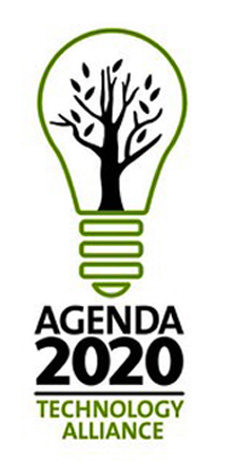Agenda 2020 Charts Path to Increase Efficiency in Fresh Water Use
![]() Print this Article | Send to Colleague
Print this Article | Send to Colleague
 Achieving a 50% reduction in fresh water consumption per ton of finished product by 2030 is an ambitious goal of Agenda 2020, Washington, D.C., USA. The organization this week released its 2016 research roadmap outlining priority research initiatives to achieve significant efficiencies in the use and re-use of water in pulp and paper mills en route to that goal.
Achieving a 50% reduction in fresh water consumption per ton of finished product by 2030 is an ambitious goal of Agenda 2020, Washington, D.C., USA. The organization this week released its 2016 research roadmap outlining priority research initiatives to achieve significant efficiencies in the use and re-use of water in pulp and paper mills en route to that goal.The release of this roadmap was timed to coincide with a Water Summit being held at the White House, in conjunction with United Nations World Water Day. The annual event focuses attention on the importance of freshwater resources and advocates for sustainable management of them. "Getting to 5,000 gal. of fresh water per ton of finished product would reduce intake by an estimated 480 billion gal. per year nationwide," said Executive Director David Turpin. "Our member companies recognize that water availability is already limited in some parts of the country and limitations might be more widespread in future years."
Turpin explained that greater efficiency in use of water, energy, and natural resources is an important aspect of achieving more sustainable manufacturing processes, a key goal of Agenda 2020 members and the industry generally. "While the industry accomplished a 55% reduction in fresh water use from 1975 to the present, our members want to accelerate the rate of reduction—but technical barriers and high costs are impeding progress," he observed, "so the measures outlined in the roadmap would address those issues."
The research outlined in the roadmap would seek new, more cost-effective ways to isolate and remove certain process materials that can build up when water is reused in manufacturing. Agenda 2020 will publicize and market the roadmaps to universities and research institutes to engage scientists and experts in executing the necessary studies.
The Agenda 2020 Reuse of Process Effluents Roadmap is one of five being released this spring. In 2014, the organization was awarded a NIST Advanced Manufacturing grant to develop research pathways towards breakthrough technologies to create efficiency in manufacturing and develop new products from forest biomass. The other roadmaps address advanced, energy-saving technologies to manufacture pulp, to produce a drier sheet before the paper drying section, and to concentrate spent pulping chemicals—and to enable development of new products from cellulosic nanomaterials.
More information is available online.
The Agenda 2020 Technology Alliance is an industry-led consortium that promotes development of advanced manufacturing technologies for the pulp and paper industry, with the objective of increasing its sustainability, efficiency, and competitiveness.


